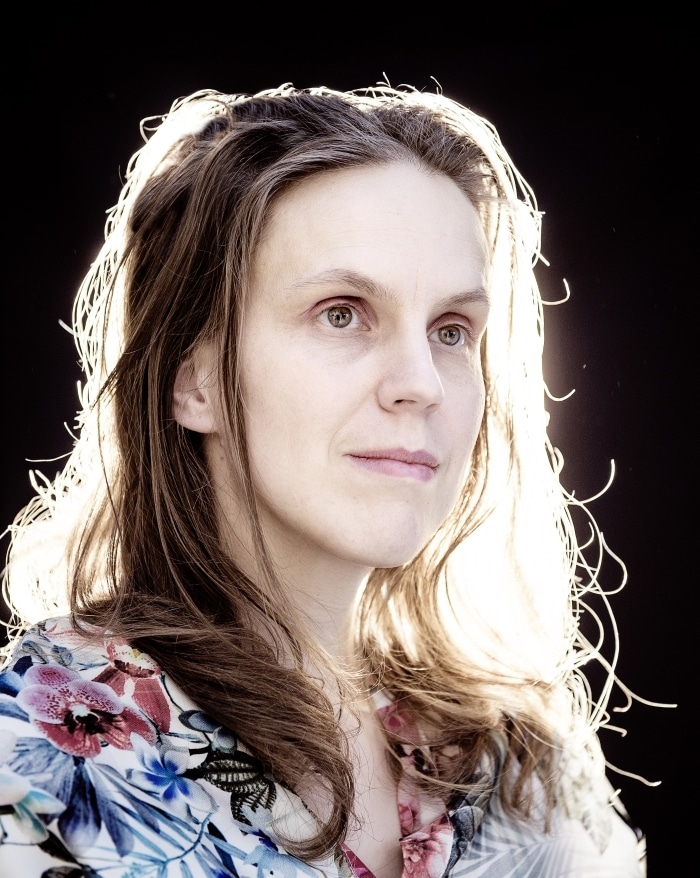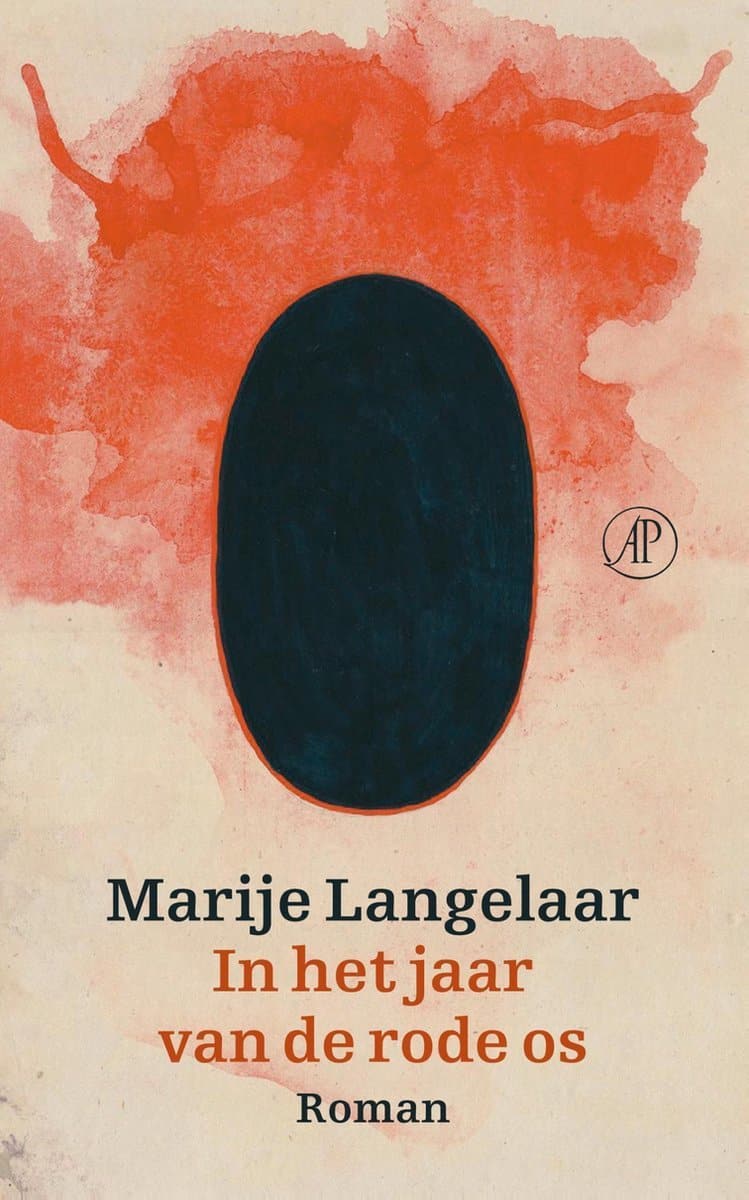‘In het jaar van de rode os’ by Marije Langelaar: The Cracks Through Which Our Lives Slowly Disappear
Marije Langelaar’s debut novel In het jaar van de rode os (In the year of the red ox) is a short triptych in which dreams and reality are softly entwined, in search of perfect symbiosis.
Over the years, Marije Langelaar (b. 1978), who was born in Zeeland, has quietly built up a fine reputation as a poet. With her collections De rivier als vlakte (2003, The river as plane), De schuur in (2009, Into the Barn) and Vonkt (2017, Sparking) she has won several nominations and awards, both in Flanders and the Netherlands.
 Marije Langelaar
Marije Langelaar© Ivonne Zijp
Just before the summer, her prose debut In het jaar van de rode os (In the year of the red ox) was published, in which the poet’s voice shines through clearly. This is a book full of playful, original metaphors, in which nothing is what it first seems, and in which if not everything, then a lot turns out to be possible. A book where everything and everyone is connected to everything and everyone else, if you read carefully enough. The advantage of this is that you can truly let your own imagination run free in Langelaar’s stories.
The novel is presented as a triptych. In the first part, Land, we are introduced to a young girl, though we do not know her age. She is shy, prefers to remain in the shadows. When her mother is pregnant, she is sent to stay with her grandmother, where she goes on adventures with the boy next door, whom she likes. That is just as well because otherwise there is not much to do on the farm: ‘The day consisted of preparing food and digesting it.’
This is a book full of playful, original metaphors, in which nothing is what it first seems, and in which if not everything, then a lot turns out to be possible
Part two, Lasso, is a dystopian story, in which the world has fallen prey to PGD, Partial Gravity Deprivation, which sometimes causes people and objects to fly around. At times, the loss of gravity is so strong that people, animals, cars, and bicycles burn up into the atmosphere. PGD, like Covid-19, divides the world into believers and non-believers; some people believe that it is the planet’s revenge on humanity, and that humans should not resist its forces. They go around dressed in white and willingly let themselves be swallowed up by the black universe at the onset of PGD.
The third and last part is an epistolary novel. A woman, somewhere in a Spanish-speaking country, writes letters to a condor, a vulture mainly found in the Andes Mountains. Not only is she completely under the spell of this condor, but she also believes that she once was a condor herself, had her own mighty wings, wings that she longs to have again, wings that can give her freedom…
This novel asks to be read as a collection of poetry, attentively, with an eye for all the details, and for the playful, original, and rich use of language
It is never made explicit, but the three parts of the book are very much linked. You can assume that the narrator is the same woman, but besides that rather obvious possibility, the stories are connected by subtle references. A baby pops up in each one, but not always endearingly or joyful. In every story you have to watch out for cracks, because it is through those cracks that life threatens to slip away, slowly but surely. There are drifts of sand, there are oxen, of course, there are other signals from nature. Here we can readily recognise the poet from Vonkt (Sparking), a collection that also contains mystical and spiritual elements. In this third part, especially, dreams and reality are intertwined, you no longer know which is which.

Langelaar thus plays a wonderful game with her own stories and with the reader. This is a book to read leisurely, by the crackle of a fire, and to savour word for word, otherwise much is in danger of being missed. A novel that asks to be read as a collection of poetry, attentively, with an eye for all the details, and for the playful, original, and rich use of language. It does not matter if you sometimes miss a reference, or do not notice all the connections between the three parts. Ultimately there are enough indications that everything and everyone is connected, that we do not (and cannot) live separate from each other.
Perhaps it goes without saying that the tone is not always cheerful. Yet there is still always room for consolation. Or as Langelaar writes: ‘I found this reassuring, when everything and everyone disappoints you, there is always the pitch-black night and the trees. And the wind. The sand that drifts. That much is needed.’
Excerpts from ‘In het jaar van de rode os’, as translated by Paul Vincent
Excerpt 1
I
The twilight drained away all the colours and deposited them elsewhere. I looked at the long grass, a good metre below the veranda, which was moving about as if invisible creatures were fighting in it.
I drank my milk, and looked at a few last insects streaking away in search of a hiding place.
I spilt the remainder of the milk on the floor, and a puny jet splattered into tiny, whitish spots. A few drops, on the crooked planks, disappeared into crannies. The floor devoured them greedily.
Not only milk, but also small branches, drawing pins, little creatures, and as always the rain, disappeared into the dark hollow space beneath the house. I suspected there were also larger, all-embracing crannies into which the life of the sick and old eventually trickled before death loosened tongues with venom.
With my sneakers I swept the tiny remaining pools into a single smudge and went inside.
There sat my mother, at the table in front of a large jigsaw of the tower of Utrecht cathedral, she hugged me and ran her fingers through my hair, and afterwards told me she was pregnant.
My father was drinking coffee.
Excerpt 2
Mi amado cόndor
Dearest condor, wild black flower in the sky, in the trees, I am writing to you.
You’re the one, I was once you. I too had black feathers, streaming like a black waterfall from a smooth head, dived into the air, clutched the breeze and shot through the sunset, riding the wind. I really was a magnificent bird. Majestic! I had many brothers and sisters under me, I had many children. Enough to eat.
Something must have happened, perhaps I saw a human being, absorbed in his activities, his boat, his hut, embracing another, perhaps I saw playing children running across the open plain, or among waving stalks and there was also a kind of desire, suddenly, to feel that too. A wanderer on the earth, a being with two legs that it can run or dance or swim with.
That brief desire was enough to attract my soul, as curious as a mouse as it is, to a human being and choose the moment when a human man and a human woman come together, and plunge into the conception and from there began the growing in the human embryo. Oh, to be so tangled up so clumsily in another being without the royal wings. I had growing pains, screamed inaudibly in the belly of my human mother. To the rhythm of the heartbeat I imagined disappearing. As if in a great wheel I would twist my way out of the body, that’s possible, condor my darling condor, you know.
Marije Langelaar, In het jaar van de rode os, De Arbeiderspers, Amsterdam-Antwerpen, 2020, 144 pp.












